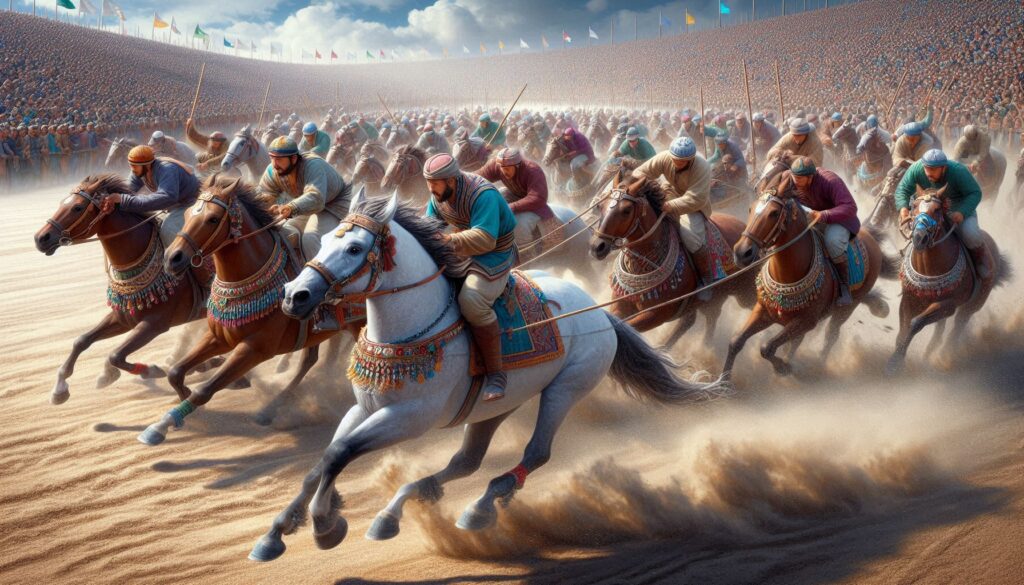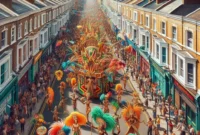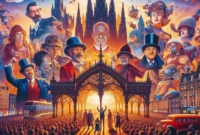
Mongolia, a land of vast steppes, nomadic traditions, and rich history, celebrates its national pride through a vibrant and ancient festival known as Naadam. Held annually from July 11 to 13, Naadam is a spectacular showcase of Mongolian culture, bringing together the “Three Manly Games” — wrestling, horse racing, and archery. This grand festival is not only a sporting event but also a cultural phenomenon deeply embedded in the Mongolian way of life.
The Origins of Naadam
Naadam’s roots can be traced back over two thousand years, intertwining with Mongolia’s historical milestones and nomadic traditions. Originally, the festival served as a military training exercise, designed to keep warriors in peak physical condition. Over time, it evolved into a nationwide celebration, commemorating Mongolia’s 1921 revolution when it declared independence from Chinese rule. Today, Naadam is a vibrant symbol of Mongolia’s national identity and a testament to its enduring cultural heritage.
The “Three Manly Games”
Wrestling
Wrestling is the centerpiece of Naadam, embodying strength, skill, and honor. The sport is steeped in tradition, with wrestlers wearing distinctive attire that includes a tight-fitting jacket (zodog) and shorts (shuudag). The competition follows an elimination format, with no weight classes, meaning smaller wrestlers often face much larger opponents. The matches continue until one wrestler touches the ground with any part of their body other than their feet.

Wrestling is not just a test of physical prowess but also a display of ceremonial customs. Wrestlers perform a traditional eagle dance (devee) before and after each match, symbolizing strength and the soaring spirit of the Mongolian warrior. The titles awarded to the champions, such as “Titan” and “Lion,” reflect their esteemed status in Mongolian society.
Horse Racing
In Mongolia, horses are more than just animals; they are a vital part of the nomadic lifestyle. Naadam’s horse racing events highlight the profound bond between Mongolians and their horses. Unlike Western-style racing, Mongolian horse races cover vast distances, ranging from 15 to 30 kilometers, depending on the age of the horses. The races are a test of endurance and speed, with horses starting as young as two years old.

The jockeys are typically children, aged between 5 and 13, showcasing their remarkable riding skills. Before the race, horses are blessed with a special ceremony, and the winning horse is celebrated with songs and rituals. The importance of the horse in Mongolian culture is evident in every aspect of the race, making it a deeply spiritual and communal event.
Archery
Archery, the third of the “Three Manly Games,” has ancient roots in Mongolian history. It harks back to the days of Genghis Khan, whose warriors were famed for their archery skills. During Naadam, archers compete in traditional costumes, using composite bows made from sinew, wood, and horn. The targets are small leather cylinders called surs, arranged in a tight formation.

Both men and women participate in archery competitions, reflecting the inclusive nature of Mongolian society. The archers chant encouraging words to their teammates, and the accuracy of their shots is met with communal applause and admiration. The archery events not only highlight individual skill but also emphasize teamwork and collective spirit.
Beyond the Games: Cultural Extravaganza
Naadam is more than just a sports festival; it is a cultural extravaganza that brings together music, dance, art, and food. The opening ceremony is a grand spectacle, featuring elaborate parades, traditional music performances, and vibrant dances that narrate Mongolia’s rich history and folklore. The intricate costumes, made from silk and adorned with elaborate patterns, are a visual feast, showcasing the artistry and craftsmanship of Mongolian culture.
Food stalls offering traditional Mongolian delicacies such as khuushuur (fried meat dumplings), buuz (steamed dumplings), and airag (fermented mare’s milk) are an integral part of the festival. These culinary delights provide a taste of Mongolia’s nomadic heritage and agricultural abundance.
Naadam in the Modern Era
In recent years, Naadam has gained international recognition, attracting tourists from around the world. The festival offers a unique opportunity for visitors to immerse themselves in Mongolian culture and witness the country’s traditional sports. Despite its growing popularity, Naadam remains a deeply local event, rooted in the values and traditions of the Mongolian people.
The Mongolian government has also taken steps to preserve and promote Naadam as a cultural heritage. In 2010, UNESCO recognized Naadam as an Intangible Cultural Heritage of Humanity, highlighting its significance in preserving traditional knowledge and practices.
Naadam is a celebration of Mongolia’s past, present, and future. It is a vibrant tapestry of sports, culture, and community, woven together by centuries of tradition and national pride. Whether you’re a sports enthusiast, a culture aficionado, or a curious traveler, Naadam offers an unforgettable experience that captures the heart and soul of Mongolia. As the country continues to evolve, Naadam remains a steadfast reminder of its enduring heritage and the indomitable spirit of its people.




2 comments